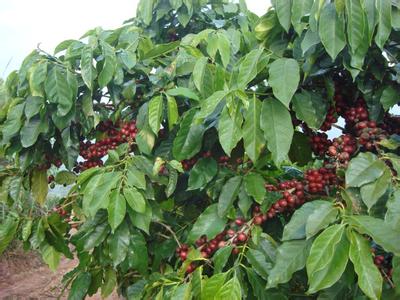The definition of boutique coffee; the third coffee wave
The definition of boutique coffee; the third coffee wave
The first coffee wave: in the 1930s and 1940s, the US military took coffee as a necessity around the world to prevent combat fatigue, and the bitterness of coffee was known by the public as a pick-me-up. Then the invention and rise of instant coffee.
The second coffee wave: after World War II, the Italian method of steam pressure extraction of espresso began to be familiar and accepted, so the concentrated-based fancy coffee was also recognized and promoted. At that time, the quality of coffee was mixed, generally using deep baking, paying attention to the caramel feeling and alcohol thickness brought by roasting. Then Starbucks and other coffee shop chains emerged and became popular.
The third coffee wave: around 2000, there began to be a wave of boutique coffee. Emphasize the regional taste of coffee, the taste of coffee produced in each region is different, so the boutique coffee plantation began to appear, no longer defective beans, promote shallow roasting, highlight the personality of coffee itself.
A cup of iced coffee-one of the most respected ways to make boutique coffee around the world in the past two years. Each cup of ice drop coffee is made of ice meltwater and coffee powder extracted drop by drop. At the standard rate of 40 to 60 drops per minute, the coffee can be made for more than ten hours or more. At Seesaw, ice drops and hand-brewed coffee account for 15 per cent of total coffee sales.
In the past few years, after Starbucks has cultivated the global coffee market, there are more and more coffee connoisseurs who have higher requirements for coffee beans. at the same time, the pursuit of boutique coffee production methods such as ice droplets, hand brewing, siphon and the use of semi-automatic coffee machines have laid the foundation for the scale of boutique cafes in China's first-and second-tier cities.

Important Notice :
前街咖啡 FrontStreet Coffee has moved to new addredd:
FrontStreet Coffee Address: 315,Donghua East Road,GuangZhou
Tel:020 38364473
- Prev

Introduction to the requirements of grinding scale in the production method of Yega Xuefei coffee bean siphon pot
Introduction to the requirements for grinding scale of Yega Xuefei coffee bean siphon pot: close to Italian practice, direct heating, after all, there is still a big gap between pressure and temperature control. A lower starting point, more than 300 can be bought, and qualified Italian machine 2000 start than save money, if you do well, you can pull flowers. Hand brewing: the third wave of coffee culture, the necessary equipment includes hand brewing.
- Next

What is the flavor of Ethiopian coffee honey kiss? taste characteristics Manor introduction
What is the flavor of Ethiopian coffee honey kiss this coffee was named after Nectar from Shakisso in 2009, meaning it has the same flavor as nectar from Ethiopia. Nekisse is characterized by a creamy, smooth taste and a strong berry sauce, and some batches even have mixed flavors of chamomile and a variety of tropical fruits
Related
- Detailed explanation of Jadeite planting Land in Panamanian Jadeite Manor introduction to the grading system of Jadeite competitive bidding, Red bid, Green bid and Rose Summer
- Story of Coffee planting in Brenka region of Costa Rica Stonehenge Manor anaerobic heavy honey treatment of flavor mouth
- What's on the barrel of Blue Mountain Coffee beans?
- Can American coffee also pull flowers? How to use hot American style to pull out a good-looking pattern?
- Can you make a cold extract with coffee beans? What is the right proportion for cold-extracted coffee formula?
- Indonesian PWN Gold Mandrine Coffee Origin Features Flavor How to Chong? Mandolin coffee is American.
- A brief introduction to the flavor characteristics of Brazilian yellow bourbon coffee beans
- What is the effect of different water quality on the flavor of cold-extracted coffee? What kind of water is best for brewing coffee?
- Why do you think of Rose Summer whenever you mention Panamanian coffee?
- Introduction to the characteristics of authentic blue mountain coffee bean producing areas? What is the CIB Coffee Authority in Jamaica?

